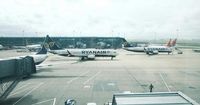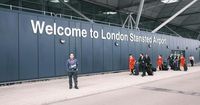Stansted Airport, nestled in the Essex countryside, has long been a gateway for millions of travelers. But behind its bustling terminals and ever-busy runways lies a story of transformation, ambition, and the dedicated people who keep it running smoothly. As the airport embarks on a massive £1.1 billion project to boost its capacity from 30 million to a staggering 43 million passengers per year, its history and future are more intertwined than ever.
The journey of Stansted Airport stretches back 83 years, with its origins rooted in the Second World War. According to Newsquest, the original runway was constructed by the US Air Force in 1942, serving as part of the Stansted Mountfitchet Airfield. This military heritage set the stage for what would become a major civilian airport decades later.
In 1966, a significant shift occurred when the British Airports Authority assumed control of Stansted. The airport was already seeing a steady increase in travelers, prompting the extension of its terminal from 1970 onwards. By 1980, with passenger numbers climbing, the British Airports Authority submitted a planning application to Uttlesford District Council, seeking to develop Stansted further to accommodate growing demand.
What followed was a public inquiry that would last an astonishing 258 days. Finally, in 1985, the government granted permission for the development, allowing the airport to handle up to 15 million passengers annually. Construction began the following year, and in 1991, Queen Elizabeth II herself inaugurated the new £400 million terminal, aprons, and taxiways. This expansion marked a turning point: Stansted’s annual capacity leapt from two million to eight million passengers, according to BBC reporting at the time.
As the new millennium approached, Stansted was not content to rest on its laurels. Phase two of the airport’s growth kicked off around 2000, with public consultations beginning on plans to further expand capacity to 25 million passengers a year. Uttlesford District Council granted planning permission for this phase in 2002, setting the stage for another period of rapid growth.
By August 2007, Stansted was experiencing its busiest summer yet, with 2.5 million passengers passing through its gates in a single month—a record at the time. The airport’s importance to both leisure and business travelers in the region was clear, and its role as a major hub for Essex residents and those from farther afield continued to grow.
The next big change came in 2013, when Manchester Airports Group purchased Stansted for £1.5 billion. This acquisition brought fresh investment and new opportunities. In 2017, Jet2.com selected Stansted as its first ever base in southern England, a move that underscored the airport’s growing significance in the UK’s aviation landscape. The following year, direct Emirates flights to Dubai began, connecting Stansted to one of the world’s major international hubs.
Fast forward to 2025, and Stansted is once again poised for transformation. The airport’s ambitious £1.1 billion project aims to increase its capacity from 30 million to 43 million passengers annually. But what does this massive undertaking look like behind the scenes?
To find out, a journalist from Newsquest recently spent a day exploring the inner workings of the airport, meeting the people driving this transformation. The visit, which took place on September 10, 2025, offered a rare glimpse into the departments and innovations that keep Stansted running like clockwork.
One of the highlights was a tour of the new security lane operation, guided by Martin Bendry, the head of security. The upgraded lanes, the journalist observed, are a clear improvement over older systems, designed to streamline the security process for both passengers and staff. This is no small feat, considering the sheer volume of travelers moving through the airport each day.
Jamie Green, the head of customer service, provided a firsthand look at the new domestic arrivals building. Opened in July 2025 by Kemi Badenoch, the facility is part of the airport’s broader effort to enhance the passenger experience. The journalist also visited the satellite two building, where upgraded seating was being installed—a small but meaningful improvement for weary travelers waiting for their flights.
Throughout the day, the journalist was accompanied by Marlon Osborne, the business change and readiness director, and Daniel Burford, head of stakeholder communications. Their insights shed light on the complexity of the airport’s transformation. As Osborne explained, "There is so much going on, and every single person I spoke to seemed so passionate about working at the airport, in the aviation industry, and ensuring passengers have the best experience possible."
It’s not just passengers who face rigorous security procedures at Stansted. All staff must pass through 'validation points' before accessing airside areas, undergoing the same checks as travelers. This commitment to safety and efficiency is a hallmark of the airport’s operations.
The journalist’s behind-the-scenes visit left a lasting impression. "After spending the day, I have a newfound respect for the people who help run the airport," they wrote. It’s a sentiment echoed by many who witness firsthand the dedication of Stansted’s staff, from security teams to customer service representatives and beyond.
For Essex residents, Stansted is more than just a convenient travel hub—it’s a vital part of the community. Located just a 45-minute to one-hour drive from Colchester, depending on traffic, the airport serves as a lifeline for holiday-goers and business travelers alike. Its ongoing expansion promises not only to accommodate more passengers but also to create new jobs and opportunities in the region.
As Stansted looks to the future, its story is one of continuous evolution. From its wartime origins to its current status as one of the UK’s busiest airports, and now to its ambitious plans for growth, the airport remains a testament to the power of vision, investment, and the people who make it all possible.
With the £1.1 billion transformation underway and a target of 43 million passengers a year on the horizon, Stansted Airport is set to soar to new heights—while never forgetting the hard work and passion that got it there.

